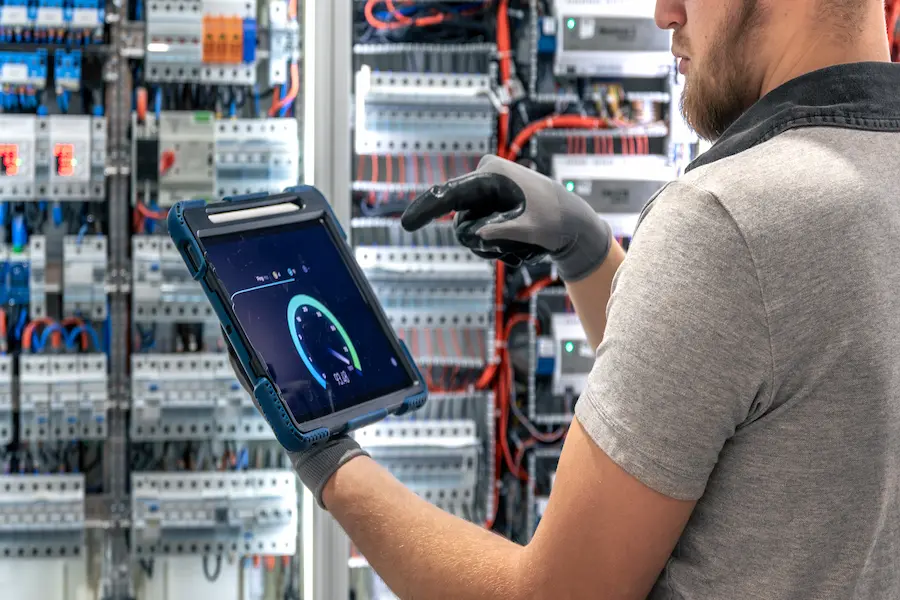Introduction: What is Electric Automation?
Electric automation is no longer a futuristic concept it’s a game-changing technology that is already transforming the way businesses operate. By integrating electric-powered control systems, automation allows machines, robots, and software to perform tasks previously requiring human labor. This revolution spans industries from manufacturing and logistics to healthcare and energy.
With the rapid adoption of automation technologies, businesses are gaining a competitive edge. These systems are capable of performing tasks with incredible precision, reducing human error, improving efficiency, and offering scalable solutions. But what makes automation indispensable today? Let’s explore the key benefits and applications of electric automation in various sectors.
How Does Electric Automation Work?
At its core, electric automation involves the use of sensors, control systems, and actuators to carry out automated tasks. It leverages electric motors and Programmable Logic Controllers (PLCs) to power machines and processes across various sectors. The primary functions include:
Sensors detect changes in environment, temperature, or pressure.
PLCs process this data and command actuators to perform physical actions.
Motors drive machinery to produce desired outputs.
This seamless integration ensures efficiency, adaptability, and scalability, allowing systems to respond to real-time changes, ensuring continuous operation with minimal intervention. IoT-enabled devices and AI-powered control systems are also now making automation systems more intelligent, allowing them to learn and optimize performance over time.
Benefits of Electric Automation
The benefits of electric automation extend beyond simple time savings. These systems bring long-term value to businesses by addressing key operational challenges:
Increased Efficiency: Electric automation ensures that systems run 24/7 without the need for breaks, improving throughput and reducing bottlenecks.
Enhanced Precision: Machines operate with precision, reducing human error, which is crucial for industries that require tight tolerances like automotive manufacturing, pharmaceuticals, and electronics.
Cost Savings: Although there is an upfront investment, the reduction in labor costs, fewer errors, and lower operational overhead lead to significant cost savings in the long term.
Improved Safety: Automation systems can take over dangerous tasks such as working in hazardous environments, handling toxic chemicals, or performing heavy lifting, thereby improving worker safety.
Scalability and Flexibility: Automation systems are scalable, meaning businesses can expand production without needing to significantly increase the workforce. These systems are adaptable, adjusting to increased demand or changes in production.
Electric Automation Across Industries
Electric automation is transforming industries in profound ways. Here are some key sectors that benefit from these technologies:
Manufacturing Automation: From assembly lines to robotic arms, automation has reshaped the manufacturing landscape. Systems use sensors and AI-driven robots to reduce errors and improve quality control while increasing speed.
Food and Beverage: Automation in food production helps ensure hygiene, consistency, and speed. Automated packaging, quality control checks, and ingredient mixing allow businesses to meet growing consumer demands without compromising on standards.
Healthcare Automation: In healthcare, robot-assisted surgeries, automated diagnostic systems, and AI-powered health management improve patient outcomes while reducing wait times and human error.
Agriculture Automation: Automated systems are being used for precision farming, from drones that monitor crop health to robotic harvesters. This improves yield while reducing the environmental impact of farming.
Energy: Automated systems are used to manage power plants, optimize energy distribution, and integrate renewable energy sources like wind and solar power into the grid. Smart grids powered by electric automation are more reliable and efficient, reducing waste and improving sustainability.
Challenges of Electric Automation
While the benefits are clear, there are several challenges associated with electric automation:
High Initial Costs: While automation systems offer long-term savings, the upfront costs especially for small to medium enterprises (SMEs) can be a significant hurdle. Investing in hardware, software, and training is required.
Integration with Legacy Systems: Many industries still use legacy machinery that isn’t compatible with modern automation technologies. Retrofitting older systems can be complex and costly.
Cybersecurity Risks: As automation systems become increasingly connected to the cloud and IoT, the risk of cyber-attacks grows. Companies must invest in robust cybersecurity measures to protect their systems and data.
Workforce Resistance: Employees may fear job loss due to automation. However, automation often augments rather than replaces jobs, empowering employees to focus on higher-value tasks like decision-making and problem-solving.
The Role of AI and Machine Learning in Electric Automation
AI (Artificial Intelligence) and machine learning are integral to the future of electric automation. These technologies enable systems to continuously improve by:
Learning from data: AI and machine learning enable automation systems to optimize their performance by adjusting to changing conditions.
Predictive maintenance: Systems can predict potential failures or malfunctions before they occur, ensuring timely maintenance and reducing costly downtime.
Improving decision-making: AI-driven systems help make smarter decisions in real-time, such as adjusting production schedules or recalibrating machinery for optimal efficiency.
Next Steps: Implementing Electric Automation in Your Business
If you’re ready to harness the power of electric automation, here’s a step-by-step guide to implementation:
Identify Tasks for Automation: Start by automating repetitive tasks that require minimal decision-making, such as inventory management, packaging, and order processing.
Select the Right Technology: Choose the appropriate technology based on your needs whether it’s robotic systems, AI-driven software, or IoT-enabled sensors.
Integration and Monitoring: Once automation systems are installed, monitor them continuously for performance optimization. Regular maintenance ensures that automation systems run at their full potential.
Employee Training: Educate employees on how automation will complement their roles and enhance their work experience. Offering training programs is essential for a smooth transition.
Conclusion: Embrace Electric Automation for a Smarter Future
Electric automation is the future of industry, providing businesses with the tools they need to stay ahead in an increasingly competitive world. With its benefits ranging from increased efficiency to improved precision, electric automation will continue to drive innovation in every sector.
By integrating automation into your operations today, you are preparing your business for the challenges and opportunities of tomorrow. The future is automated embrace it.
Read Also:Pro Automation: 8 Ways to Boost Efficiency and Save Time for Maximum Business Growth

